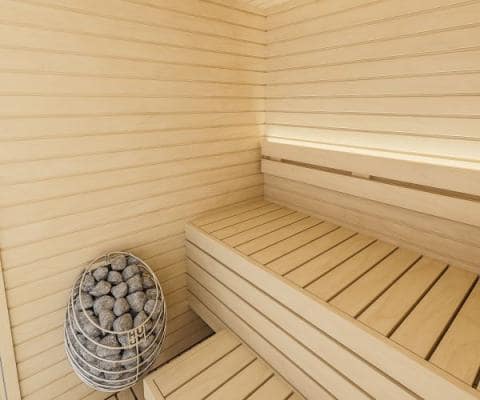Facts About Traditional Sauna Revealed
Facts About Traditional Sauna Revealed
Blog Article
How Traditional Sauna can Save You Time, Stress, and Money.
Table of ContentsSome Known Facts About Traditional Sauna.Excitement About Traditional SaunaSome Known Incorrect Statements About Traditional Sauna Fascination About Traditional SaunaTraditional Sauna - Questions
Many of the weight shed in a sauna is water loss and is re-gained upon rehydrating. However, without a doubt sauna can be a vital component of a healthy fat burning program. To take a look at the differences between traditional and IR saunas, I will divide these into verifiable, academic, and fabricated differences.Therefore, the best point in the saunawhich is at the ceiling directly over the sauna heateris commonly between 185 and 190 F. Claims that a conventional sauna exceeds 200 F is simply not true and not applicable for electric saunas marketed in the United States. The temperature for a far-infrared sauna is typically set in between 120 and 140 F; however, unlike the conventional sauna, the goal in and IR area is not to achieve a heat.
As a result of this, the temperature distinction is practically irrelevant, given that profuse sweating results in both sauna kinds, but the technique of heating up the body is various. In an IR sauna the bather will certainly really feel hot and will certainly sweat a lot, however at a lot reduced temperatures (Traditional Sauna). Hence, if the goal is to spend longer time periods in the sauna, the IR sauna is a good choice
When a traditional sauna has been effectively heated, the sauna wall surfaces are warm, the air temperature level has actually attained set temperature and the rocks are super heated. As an intriguing side note, the warmed wall surfaces and the rocks are releasing far-infrared warm, integrated with the warmed air, to produce an "covering heat".
Facts About Traditional Sauna Uncovered

When the heat is accomplished, the aspects cycle on and off to maintain the high temperature. Many conventional sauna customers appreciate pouring water over the rocks to produce heavy steam to raise sauna moisture levels. The benefits of pouring water over the rocks consist of: making the area more comfortable, moistening the nasal flows, and enabling the use of aromatherapy by blending crucial oils with the water.

When the power goes into the body, it creates the body temperature level to increase and ultimately causes sweat. In an infrared sauna it is essential for the emitters/heaters to remain on virtually constantly. Considering that there is no mass of rocks to preserve warm, the sauna will certainly cool if the emitters closed off.
As pointed out over, the sauna bather in an infrared room intends to position himself in front of running emitters to get maximum gain from the heat. The heating time for the 2 areas can be very various, relying on how the areas are utilized. For a conventional sauna, a bather needs to allow 30-40 minutes for the area to accomplish a preferred temperature level and to properly pre-heat the rocks.
Getting My Traditional Sauna To Work
A well constructed sauna will usually attain a temperature of 150-160 F in concerning 30-40 minutes. For hotter temperature levels, the room might require to warmth for a longer duration. Once the space attains set temperature level, the heating unit will cycle on and off, generally running about 50% of the moment. The shielded walls and the warmed rocks will maintain the space warm and at stable temperature levels.

Typical saunas often tend to be bigger (hence make use of more electricity) than infrared saunas, although typical saunas are definitely available in one and two person dimensions as well. For a two-person typical sauna, 5x6 or 5x7 size is most preferred. The top bench can easily seat two or three people and is likewise enough time to lie down during the sauna session.
10 Easy Facts About Traditional Sauna Explained
The ordinary price per kWH of electricity in the U.S. is roughly $0.11, so a 4.5 kW heating unit will cost about $.50 to run for one hour, if the heating system runs continually for one hour. Normally a sauna heater will run for 75% of the initial hour and 50% of subsequent hours on given that the elements cycle once the set temperature is accomplished.

Lastly, there is a seldom reviewed distinction in the social experience in between the 2 spaces. While our culture has actually lost a few of the social benefit of you could try here the standard sauna experience, it can be very socially rewarding (Traditional Sauna). From family members time in the sauna, to heart-felt conversations with considerable others, to sauna partiesthe typical sauna experience can cause intimate mingling
What Does Traditional Sauna Mean?
Most greater end infrared spaces include colored light therapy, noise systems and full-glass fronts.
Report this page